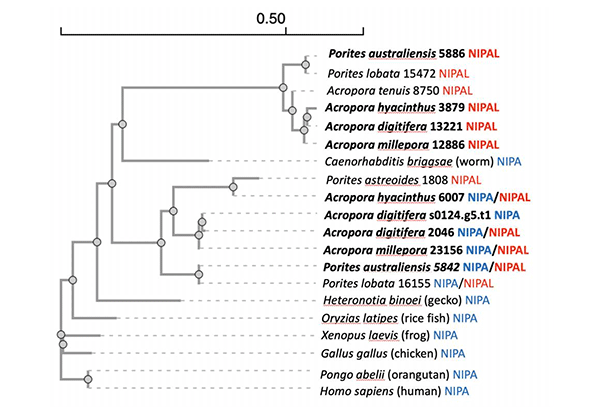Bioinformatic approach to explain how Mg from seawater may be incorporated into coral skeletons
18 Apr., 2025
Research Topics

Summary
To this date, it is challenging for paleoclimatologists to explain why some proxies have more biogenic effects than others. Selecting appropriate proxies has been heavily relying on empirical results rather than using consistent rationales. For example, Sr incorporated into coral skeletons is known to have weak biogenic effects while Mg shows strong effects. We developed a novel method to address this issue. With our bioinformatic approach, we provide logical explanations as to why the specific skeletal elements have strong biogenic effects.
What's new
We showed the evidence that Mg transporters of coral skeletons have been evolving over the past few million years. Corals that appeared during Pleistocene have higher similarity to the Mg transporters of vertebrates including humans. This implies that Mg transport systems of corals have been subject to evolutionary changes thus there is a strong biological control.
Application
We suggest that such evolutional records can be evidence to demonstrate biological complexity. This approach will facilitate the identification of geochemical proxies with strong/weak biogenic effects and provide the logical explanation to select what elements can be effective in reconstructing past ocean environments accurately.
Journal: Royal Society Open Science
Title of original paper: Bioinformatic approach to explain how Mg from seawater may be incorporated into coral skeletons
Authours: Tomoko Bell*, Akira Iguchi, Yoshikazu Ohno, Kazuhiko Sakai, Yusuke Yokoyama
DOI: 10.1098/rsos.232011
URL: https://royalsocietypublishing.org/doi/10.1098/rsos.232011![]()
Contact
Tomoko Bell bellt[at]newmanu.edu
Yusuke Yokoyama yokoyama[at]aori.u-tokyo.ac.jp
![]()



